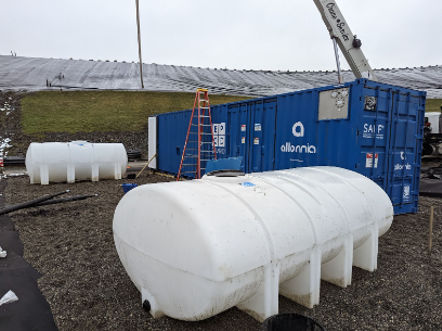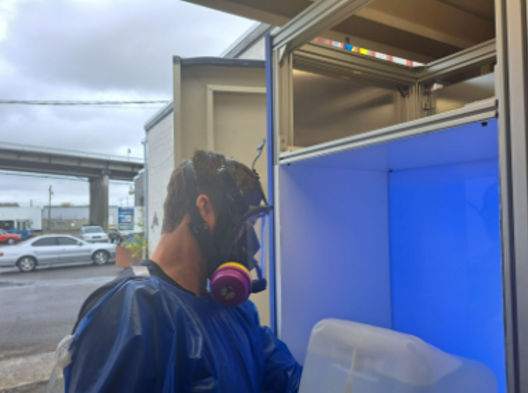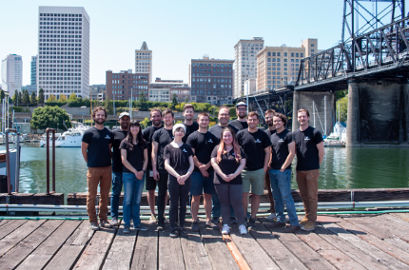HALTing the PFAS Cycle: Pioneering Close-Loop PFAS Concentration + Destruction for Landfill Leachate
November 7, 2023
Author: Aquagga, Inc.
Per- and polyfluoroalkyl substances (PFAS) are a family of synthetic chemicals that have been used for decades in a variety of applications, from non-stick cookware to water- and stain-resistant fabrics. Their resilience to degradation and resistance to water, oil, and heat have earned them the moniker "forever chemicals." While these properties make PFAS extremely useful in countless products, they also contribute to significant environmental concerns due to their persistence and potential adverse health effects.
Navigating the New Wave: PFAS Regulatory Landscape
In recent years, awareness of the environmental and health impacts of PFAS has grown, leading to calls for stricter regulations. Many countries are now implementing or considering regulations to limit the production, use, and release of PFAS. These regulations focus not only on reducing PFAS in consumer products but also on controlling PFAS emissions into the environment and ensuring safe drinking water standards.
For instance, the U.S. Environmental Protection Agency (EPA) has laid out action plans to address PFAS contamination. Their roadmap includes evaluating PFAS chemicals for potential regulatory action, developing analytical methods to detect these compounds, and building a stronger foundation of scientific research to inform decision-making.
Ripples in Rubbish: How PFAS Shifts Solid Waste Dynamics
The solid waste industry, particularly landfill operations, is at the frontline of the PFAS challenge. PFAS finds its way into landfills through discarded consumer products or industrial waste. Once in landfills, these chemicals either leach into groundwater, creating a major concern for communities relying on these sources for drinking water, or are discharged to wastewater treatment plants via landfill leachate, where they ultimately circulate back into the environment.
Emerging regulations on PFAS inevitably imply stricter guidelines on landfill leachate management. To comply, landfill operators may need to invest in expensive treatment technologies or, in some cases, face potential liabilities or litigation. The potential financial burden on the industry is enormous, and there’s a pressing need for cost-effective solutions to manage and treat PFAS-impacted landfill leachate.
Beyond the Norm: The Push for Cutting-Edge PFAS Solutions
Given the intricacies surrounding PFAS, conventional treatment methods often fall short. Traditional techniques might remove PFAS from one phase (like water) but transfer it to another (like sludge), necessitating further treatment. Hence, the need for innovative technologies that can concentrate and effectively destroy PFAS are imperative.
The overarching goal is to not just remove but to destroy PFAS, eliminating the possibility of future release. Additionally, given the extensive scale of the issue, scalable and economical solutions are prerequisites. Companies, researchers, and engineers worldwide are exploring multiple avenues, from advanced filtration methods to chemical destruction techniques.
Aquagga’s Vanguard Vision: Merging Foam Fractionation with HALT
Among those spearheading innovative solutions is Aquagga. Their case study presents a compelling approach combining foam fractionation with Hydrothermal Alkaline Treatment (HALT) for managing PFAS-impacted landfill leachate.
Foam fractionation is a separation technique that uses the surface activity or partitioning coefficient of various compounds to separate them from water. PFAS, being surfactants, tend to concentrate at air-water interfaces. By creating a foam, these chemicals can be concentrated and separated from the bulk liquid. This method provides an efficient way to concentrate PFAS from large volumes of leachate, sometimes achieving over 1,000x volume reductions.
Following the concentration step, Aquagga employs HALT – a chemical process that operates at elevated temperatures and pH. The HALT environment destroys the PFAS compounds, breaking down the strong carbon-fluorine bonds and converting them into benign constituents. By combining foam fractionation and HALT, Aquagga offers a solution that’s both cost-effective and scalable.
What sets this approach apart is its twofold strategy: concentration followed by destruction. By first concentrating PFAS from vast volumes and then applying a destruction technique, the treatment process is optimized, ensuring reduced costs and increased efficiency. Moreover, the destructive nature of HALT ensures that PFAS isn’t merely transferred from one phase to another but is effectively eliminated. Finally, the HALT effluent can be cycled back into the foam fractionation unit, keeping all PFAS in a closed-loop concentration and destruction solution.
By the Numbers: Foam + HALT

Aquagga performed a case study where foam fractionate produced at a landfill in Vermont was coupled with HALT. The foam fractionate, provided by Allonnia from operation of their SAFF-40® manufactured by EPOC Enviro, was recorded to have significant PFAS concentrations, registering at approximately 879 ppb. Further complicating matters was the complex matrix of the fractionate, characterized by high levels of Total Organic Carbon (TOC), alkalinity, turbidity and other constituents that can cause significant processing challenges for other PFAS destruction technologies. A 5-gallon sample of the landfill fractionate was processed using Aquagga’s Pilot Series system, with over 99% total PFAS destruction achieved, as shown in the Table below. These results chart a path forward in the effective treatment and management of PFAS-impacted landfill leachate.

| Analyte | Influent (ppb) | HALF Effluent (ppb) | Destruction % |
|---|---|---|---|
| PFOS | 394 | 3.96 | 98.99% |
| PFHxS | 6.87 | 0.364 | 94.7% |
| PFBS | 11.3 | 2.52 | 77.7% |
| PFOA | 50.2 | ND | >99.9% |
| PFNA | 33.2 | ND | >99.8% |
| PFDA | 31.5 | ND | >99.8% |
| MeFOSAA | 145 | ND | >99.93% |
| EtFOSAA | 34 | ND | >99.7% |
| 6:2 FTS | 130 | 0.141 | 99.89% |
| 8:2 FTS | 18.9 | ND | >99.4% |
| Total PFAS | 879 | 7.224 | 99.2% |
Why Landfill Leaders Should Listen: Unpacking the Value
Addressing the challenges posed by per- and polyfluoroalkyl substances (PFAS) is a top priority for solid waste facilities. As the need for effective treatment methods intensifies, on-site management of PFAS-impacted materials offers numerous advantages:
- Cost Efficiency: On-site treatment and destruction of PFAS-impacted materials can result in significant cost savings for solid waste facilities. By managing the process in-house, facilities can avoid transportation costs, external treatment fees, and potential liabilities associated with off-site disposal or treatment.
- Reduced Environmental Impact: By treating and destroying PFAS on-site, solid waste facilities can minimize the risk of environmental contamination during transportation. This approach ensures that PFAS are contained and managed within a controlled environment, decreasing the potential for unintentional releases into the environment.
- Operational Flexibility: Implementing on-site solutions allows solid waste facilities to tailor treatment processes to their specific needs. This adaptability ensures optimal performance, allowing for adjustments based on the volume, concentration, and specific types of PFAS encountered, leading to more efficient and effective treatment outcomes.
- Regulatory Compliance: With emerging and increasingly stringent regulations surrounding PFAS management, on-site treatment provides a proactive approach to compliance. Solid waste facilities can ensure that their operations meet current standards, positioning themselves ahead of regulatory curves and potentially avoiding future penalties or legal actions.
- Reputation and Community Relations: On-site treatment and destruction of PFAS demonstrate a facility’s commitment to environmental stewardship and public safety. By taking direct action against PFAS contamination, facilities can foster trust within the community, bolstering their reputation as responsible and forward-thinking entities.
As outlined above, on-site treatment and destruction of PFAS not only provides technical and economic benefits but also underscore a facility’s dedication to safeguarding both the environment and the community at large.
The Final Word: Deciphering the PFAS Puzzle
The rise in PFAS regulations underscores the global urgency to address “forever chemicals” and their lasting imprint on the environment. For the solid waste industry, navigating these regulations demands swift adaptation and innovative strategies. While the road ahead is challenging, case studies like Aquagga’s provide hope. By leveraging innovative technologies, we can aim for a future where PFAS is not a looming environmental specter but a challenge that was effectively addressed.
Stripes Ahead: Embracing the Zebra Ethos in Environmental Innovation

Aquagga is a cleantech hardware startup embracing a “lean development” approach to help end the most pressing environmental contamination challenge of the 21st century. Through advancing transformative technologies from the laboratory to the field, Aquagga seeks to end water contamination from toxic “forever chemicals,” also known as PFAS. Aquagga, a product of collaborative technology development efforts between the University of Washington and the Colorado School of Mines, was incorporated in 2019 as a Delaware Public Benefit Corporation (PBC) with a social and environmental impact provision.
Aquagga’s mission is to end environmental contamination from PFAS, while leveraging their resources and success to support other impact-minded leaders and entrepreneurs. Aquagga’s founders are intentionally positioning themselves at the intersection of public health and environmental justice, taking an exemplary leadership position in the Alaskan and Washingtonian startup communities.







Leave a comment